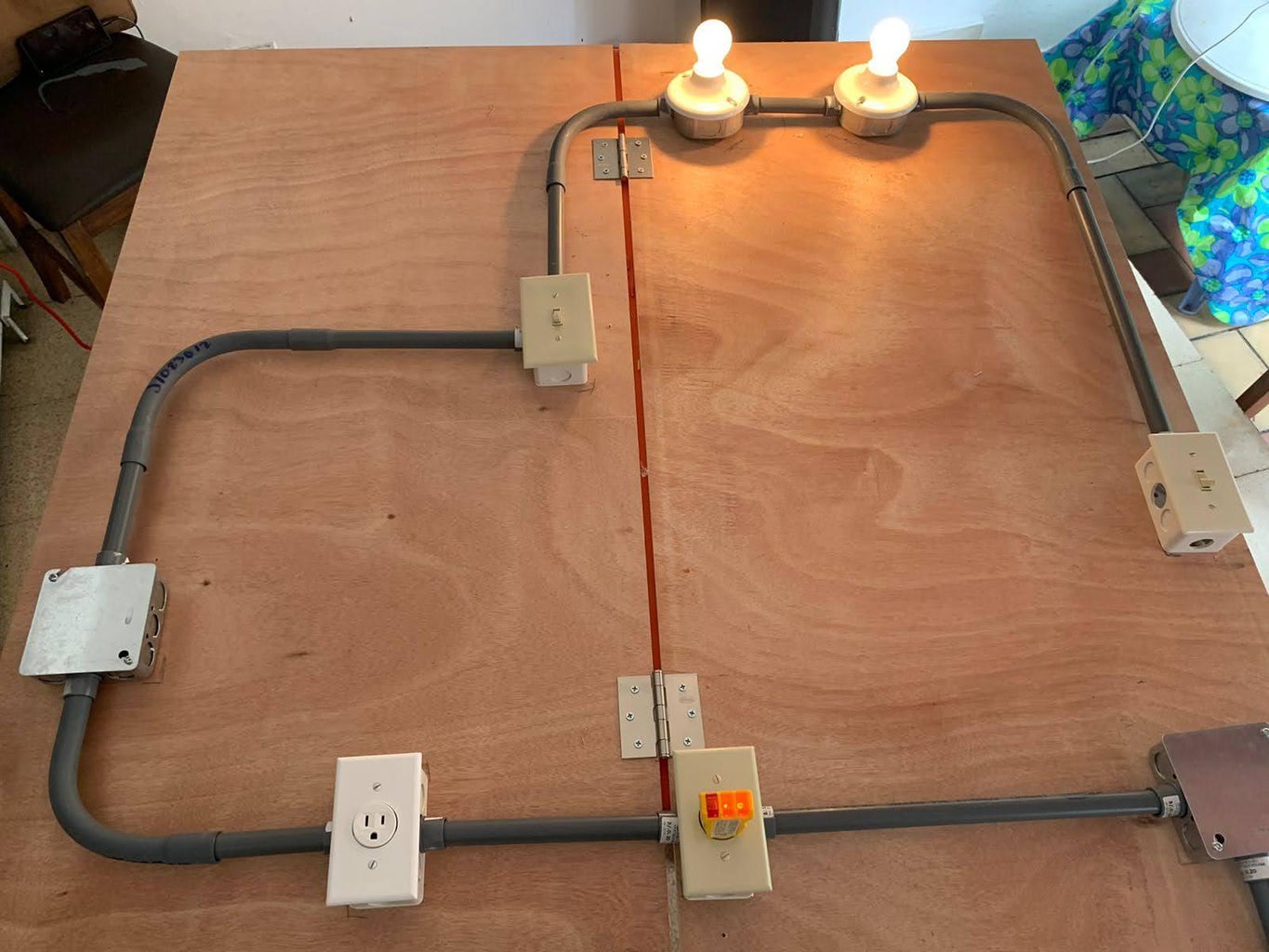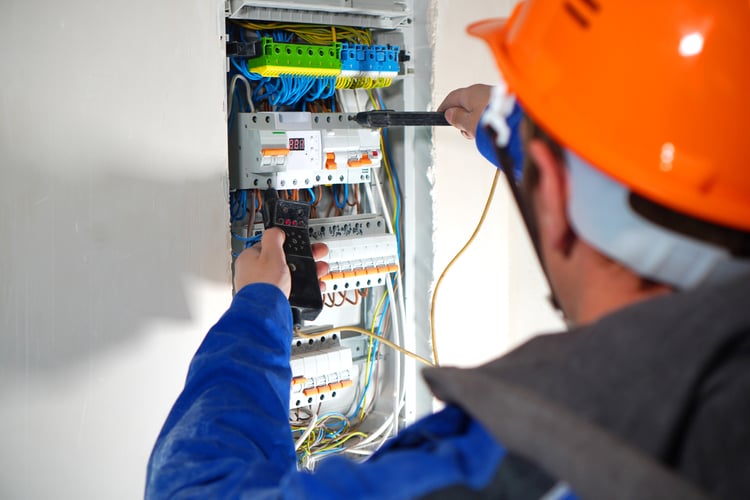The Ultimate Overview to Electrical Installment: Tips and Methods for a Safe and Reliable Home Electrical Wiring System
In the realm of home upkeep, few elements are as vital yet frequently forgotten as the electrical wiring system. Guaranteeing a secure and reliable home wiring configuration requires not only a fundamental understanding of electric concepts but likewise sensible expertise of installation methods and upkeep methods. From navigating the ins and outs of cord connections to troubleshooting typical concerns that might arise, this guide aims to furnish homeowners with the vital pointers and devices necessary for a safe and energy-efficient electric system. By discovering the nuances of electrical precaution and energy-saving techniques, this thorough overview will shed light on the complexities of home electrical wiring, encouraging individuals to take charge of their home's electric framework.
Recognizing Electrical Safety Procedures
To guarantee the safety of both people and property, understanding and implementing appropriate electric safety procedures is paramount in any type of home circuitry project. It is vital to conduct a detailed evaluation of the electrical system prior to starting any circuitry job to determine possible hazards or concerns that need to be attended to.
In addition, making use of the appropriate tools and equipment is vital for keeping safety throughout electric installments. Shielded handwear covers, voltage testers, and safety glasses are some of the basic security gear that must be used to stop electric shocks or crashes. It is also important to de-energize circuits before working with them and to label all circuits and breakers plainly to stay clear of complication.

Important Devices for Home Circuitry
Ensuring the appropriate execution of electric safety steps in home electrical wiring tasks involves utilizing a specific set of important tools developed to assist in the installment procedure properly and securely. Some of the trick devices needed for home circuitry tasks consist of a voltage tester for examining real-time wires, wire strippers for eliminating insulation from cords, a cord cutter for precisely cutting wires to size, a screwdriver established for safeguarding electric parts, electric tape for insulation and securing connections, a cable television ripper for removing cord sheathing, and a multimeter for determining voltage, existing, and resistance.
Step-by-Step Electric Installation Guide
Starting an electrical installment job needs thorough preparation and adherence to security guidelines. Before starting any type of job, guarantee you have a detailed strategy describing the format of the electrical system, consisting of the positioning of outlets, buttons, and components. Consider the power demands of each tool to identify the suitable wire gauge and breaker dimensions.
The initial step in the installment procedure is to close off the power supply to the location where you will be functioning. Use a voltage tester to verify that the circuits are de-energized before touching any cables. Next off, very carefully eliminate existing components or outlets and detach the cords.
When mounting new electrical wiring, run wires through walls and ceilings, safeguarding them in position with appropriate fittings. Adhere to local building regulations and supplier instructions for appropriate cord installation and links. BRE Electrical. Make certain to label cords for easy identification and future upkeep

Troubleshooting Common Electrical Wiring Issues
Having completed the installation procedure as laid out in the previous subtopic, repairing usual circuitry concerns is a necessary ability for making certain the safety and functionality of your electrical system. One common issue is a tripped circuit breaker, typically triggered by overloaded circuits or a brief circuit. To troubleshoot this, find the breaker panel, determine the tripped breaker by trying to find the one not completely in the "on" position, find here and reset it by flipping it completely to "off" and afterwards back to "on." One more widespread trouble is a faulty electrical outlet, defined by no power or intermittent power supply. Make certain the outlet is not controlled by a button, then make use of a voltage tester to inspect for power. If there is no power, switch off the circuit, check the wiring links for any type of loose or broken wires, and change the outlet if necessary. Continually flickering lights can suggest loosened wiring links or an overloaded circuit. To address this, check and tighten up all wire connections in the affected company website fixtures and buttons and redistribute the lots on the circuit to balance the electrical need. Consistently checking and promptly attending to these common electrical wiring issues will certainly keep the security and performance of your home electrical system.
Tips for Energy-Efficient Electrical Solutions
For ideal energy effectiveness in electrical systems, applying wise techniques and making use of energy-saving modern technologies is paramount. One key suggestion for achieving an energy-efficient electrical system is to upgrade to LED lighting. LED bulbs eat considerably less energy than conventional incandescent bulbs and have a longer lifespan, making them an economical selection over time. In addition, mounting programmable thermostats can assist control heating and cooling systems, minimizing energy waste when nobody is home. Another strategy is to buy energy-efficient home appliances that are ENERGY STAR accredited, ensuring they meet click to read more high standards for power effectiveness. Proper insulation and sealing of home windows, doors, and electric outlets can likewise prevent power loss, inevitably decreasing the workload on electric systems. Finally, think about incorporating renewable resource sources like photovoltaic panels to additional decrease dependence on standard power grids. By integrating these energy-efficient tips and modern technologies, home owners can not just save money on their power costs yet additionally decrease their ecological impact.
Verdict
To conclude, carrying out appropriate precaution, making use of important devices, adhering to a step-by-step setup overview, repairing usual issues, and integrating energy-efficient ideas are crucial for a safe and effective home electrical wiring system. By sticking to these techniques, homeowners can guarantee the durability and capability of their electric installments. It is important to prioritize security and effectiveness when it pertains to electric job in order to stop potential risks and to maintain a trustworthy electric system in the home.
Comments on “Customized BRE Electrical Solutions for Efficient and Safe Installations”